On Monday, March 6, at the Women in IR (WIR) Section luncheon, Shellie C. Josephs, MD, FSIR, will be presented with the 2023 WIR Champion Award. SIR Today recently spoke with Dr. Josephs about the award, her role as chair of the Pediatric IR Clinical Specialty Council (CSC) and more.
Congratulations on being named the Women in IR Champion Award recipient. What does “WIR Champion” mean to you?
Shellie C. Josephs, MD, FSIR: It’s an acknowledgment of the long process it has taken to get women in IR recognized as a group within the society. The first time this group tried to come together was at the SIR 2007 Annual Scientific Meeting in Seattle, with Jennifer Gould, MD, FSIR, leading the way. Our goal was just to be able to look across the room and recognize who was a physician and who wasn’t, because there were so few of us. I am proud of how the group has grown—now that we have advanced so much further, it’s getting harder to know and recognize each other as there are substantially more of us than there were back when we fit around one small table.
There are many issues that are different for women compared to men across the board in medicine. It’s not necessarily about fairness, but more about how we address and cope with these differences. Having a career in interventional radiology and a family while taking care of ourselves has become much more of a focus than it was back when I started in medicine. The WIR Section allows us to recognize each other and build relationships that we can lean on all with a commonality of our profession.
But I think most of the issues that we look at are not just about being a woman. I think that every man in our field who has young kids would like to figure out how to have a better work–life balance. It’s something that we all think about, and I want us to be careful in Women in IR that we’re not the only ones talking about work–life balance because it really affects all of us. I think for Women in IR, our goal is to learn from each other how to be good interventional radiologists, partners and team members, and to make sure that everyone is taken care of, at work and at home.
What drives your passion for interventional radiology?
SJ: I still love what I do, and I’ve been doing this for a very long time now. Interventional radiology offers such a wide variety of procedures, treating from head to toe—literally. I switched mid-career from adult IR to pediatric IR, and that shift reinvigorated what I do every day. I feel like I learn something new almost daily. Whether it is seeing a vascular anomaly patient or a child with a new diagnosis of cancer, I consider every patient interaction to be a learning opportunity, a chance to be a better doctor and to really learn how to take care of the entire patient. In pediatrics, it is not just the patient that we are caring for, but the family as well. So I thoroughly enjoy coming to work every day—it reinforces for me the need to be grateful for the healthy family I have at home and to appreciate the trust that families put in us as an individual caring for their child.
As chair of the Pediatric IR CSC, can you touch on the importance of SIR adding pediatrics as part of the recent governance restructuring?
SJ: Most IRs in the community are called upon to treat children, and a lot of us never really had any exposure to pediatric IR during our fellowships. Now that we are formally recognized, my goal as the CSC leader is to make sure that we stress pediatric IR as an educational component of the IR Residency now. I think we have the opportunity to introduce pediatric IR in an earlier education phase because we have resident trainees, and we have them for a longer period of time. What we would love to do is encourage more people to consider PIR as a subspecialty themselves. It really is substantially different, and there are a lot of knowledge gaps. Children respond to trauma differently—they have different liver masses and have specific criteria for how to do biopsies and things like that, that a lot of people may not be familiar with. And now that we are one of the CSCs, we’d like to reach across to all the other groups and make sure there is a pediatric educational component in each of those.
We are a specialty in ourselves and yet we are also a generalist in that we do everything. There is always the debate within the Venous Service Line regarding whether you put a stent in a 14-year-old young man who is still growing, but we also discuss that in the Pediatric Service Line. Or there are specific ways to do liver mass biopsies for some pediatric tumors, and all of these different elements to consider that the average community IR may not know. Now that we have this group, we’d really like to do be able to get that educational content out there, mainly by educating our residents.
Before the Pediatric IR CSC, pediatric IRs turned to the Society of Pediatric IR (SPIR) to help meet their needs. Do you anticipate collaboration with SPIR?
SJ: Definitely. I’m also an at-large member of the Board of Directors for SPIR, and I’ve worked to make sure SPIR is represented in SIR’s Pediatric IR CSC. Right now, it’s the SPIR past president and several other members of the SPIR Board of Directors. SPIR is much more international, which makes it more difficult for them to develop clinical guidelines since there can be limitations on sharing data.
Through SIR, we would like to make sure that we are always on the same page between the organizations, and having that crosspollination between the two groups really allows that, so we are all working towards one common goal. One society has a more international goal and the other has a U.S.-centric goal, but that does not mean are goals are not aligned.
You also joined the Journal of Vascular and Interventional Radiology (JVIR) Editorial Board approximately a year ago. How would you characterize that experience so far?
SJ: As a female IR, I have always been very clinical and educational oriented and less focused on research. Now that I am more senior, I found that I have a tremendous fund of knowledge and am very well-read. Being a part of the Editorial Board is another thing that has reinvigorated my love for what I do, because there really is so much that interventional radiology does every day that we still have no data behind.
Being part of the JVIR Editorial Board, it has been very encouraging to see the efforts that people put out for publications and the response that we receive from our SIR members to serve as reviewers. We would obviously love to be beyond the retrospective study, but the reality is that there are so many procedures IRs do every day that do not have any evidence to back up the practice. We do need evidence to justify our practice and advance our specialty. So far it’s been both eye-opening and enjoyable—with a lot of reading.
My specialties are predominantly vascular malformations in pediatrics, but since I’ve also worked with adults for many years, I have overlap with many areas in our field, including portal hypertension, transplant interventions, biliary disease and women’s health. It’s a lot of work, and a lot of reading, but it’s been something that I’ve really enjoyed doing.
Can you comment on the state of diversity within research?
SJ: I think what’s happening now is really fascinating. Diversity in research is important—not just in terms of who’s doing the research but also in our patients and patient populations and the effect that different factors have on their healthcare. If the WIR has had even the slightest role in improving that diversity, I think that’s something we should be very proud of.
Across the country we are paying a lot more attention to the other things that affect our patients’ outcomes, like what’s going on at their house and what types of environmental factors they have, and that all relates to diversity. I think that the pathway that we are really just starting on is looking at our studies and asking, are we including women as well as men in our cardiovascular studies? As an example, does a 90-pound woman need the same statin dosing as a 180-pound man? Are we including different ethnicities within our outcomes research? Those things are really important. I believe the WIR Section put a lot of effort into moving that forward, and I’m quite proud that we are a part of that.
But those conversations are just starting. I also think COVID had a lot to do with this because we saw how patient demographics and socioeconomic class impacted outcomes during COVID. It’s good that we’re actually talking about that now. I once had a hepatocellular cancer patient who I had to write a prescription for him to have the lower bunk at the homeless shelter when I sent him out from his chemoembolization. Those are definitely things that affect your overall outcome, and we don’t talk about those at all, and they don’t show up as data points. But we really should be thinking about what environment we send our patients home to because that definitely impacts their outcome. In pediatrics, I have always had the conversation with my DVT patients of exercising, not smoking and not vaping, and then turning to the parents adding that they shouldn’t be around smokers. It’s important to have that conversation to be able to get patients and their families into the appropriate treatments that they need. And I think that’s kind of new on our horizon as interventional radiologists.
Where would you like to see the specialty in 10 years?
As everybody always says, now that we are an independent specialty, where are we with DR? I think that at the academic centers, it is very well known now that we are clinical, and we need to remain clinical. But I still must fight to stay out of the reading room. My time is best spent seeing patients and being involved with patient care. I hope in 10 years that continued marriage with radiology is smoother and it will be completely accepted that we are a clinical specialty with expertise in imaging, but that we are predominantly a clinical specialty. It’s been a divisive topic for a long, long time. Back in 1996 in my fellowship with Julio Palmaz, we started our clinic and everyone said we were crazy. But we were able to see and help a lot of patients. It’s amazing to think after all this time that there are still IRs who do not have their own clinic. Until our clinical nature is well-known and accepted as the norm, we are always going to struggle as a specialty. We cannot be divided between “real IR” and “IR lite,” and those terms should make us very nervous. When another specialty needs help and says “Call IR,” the expectation placed on who responds to that call should not be in question. We must all be “real IR,” and that is my goal for our specialty in the future.




